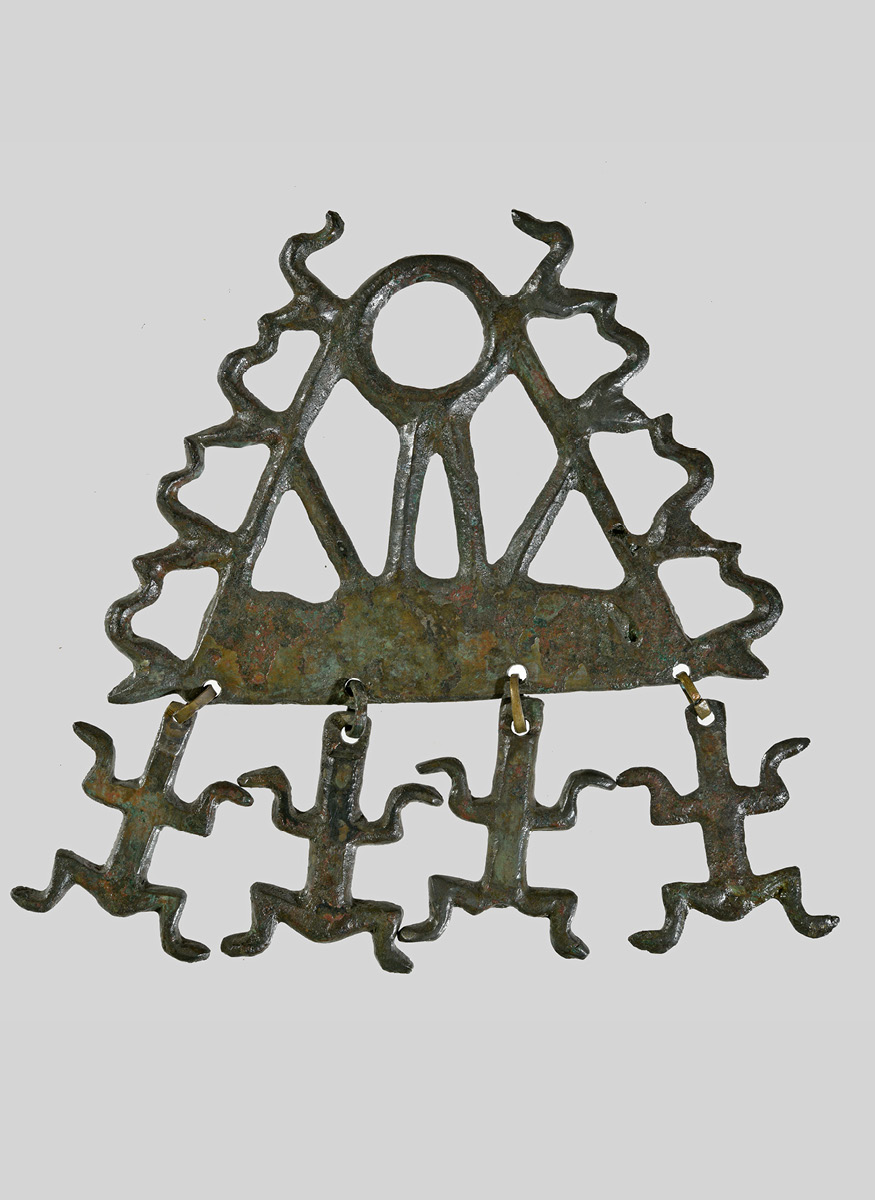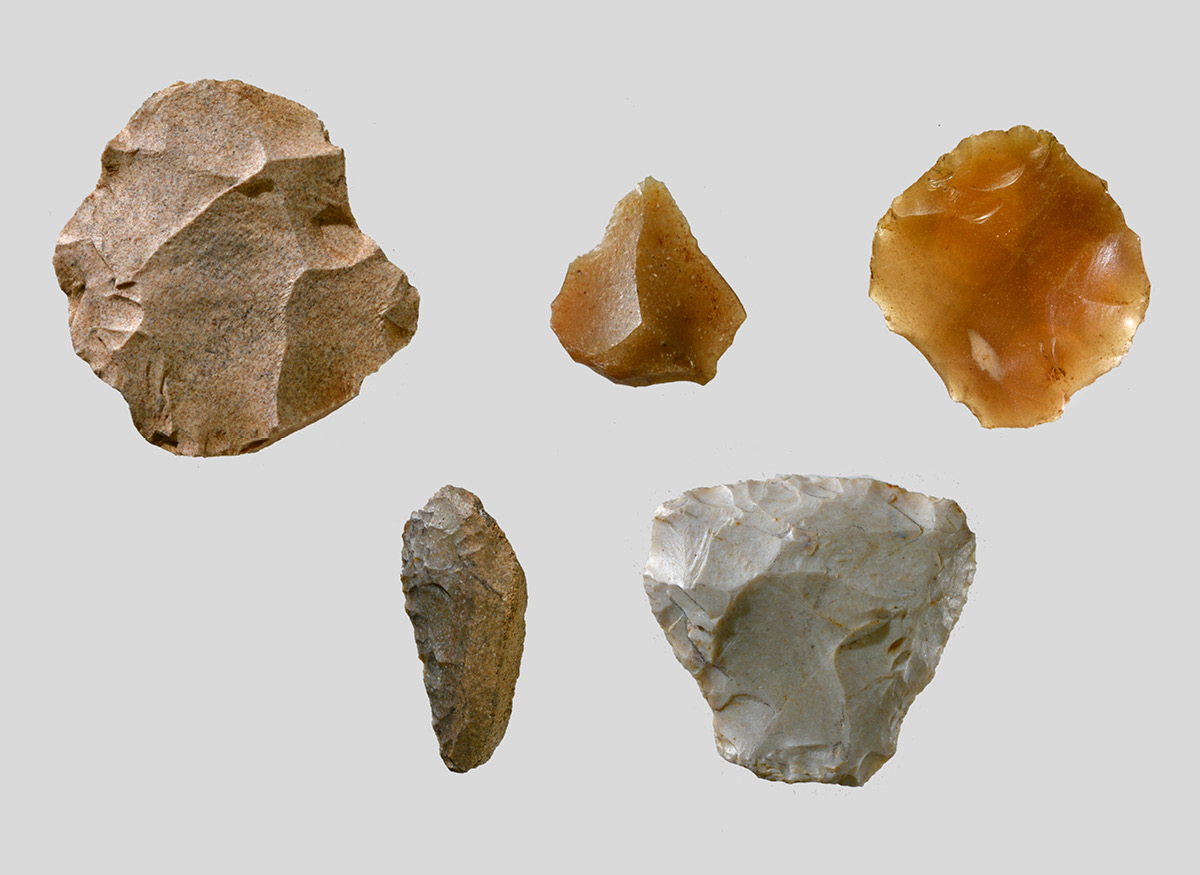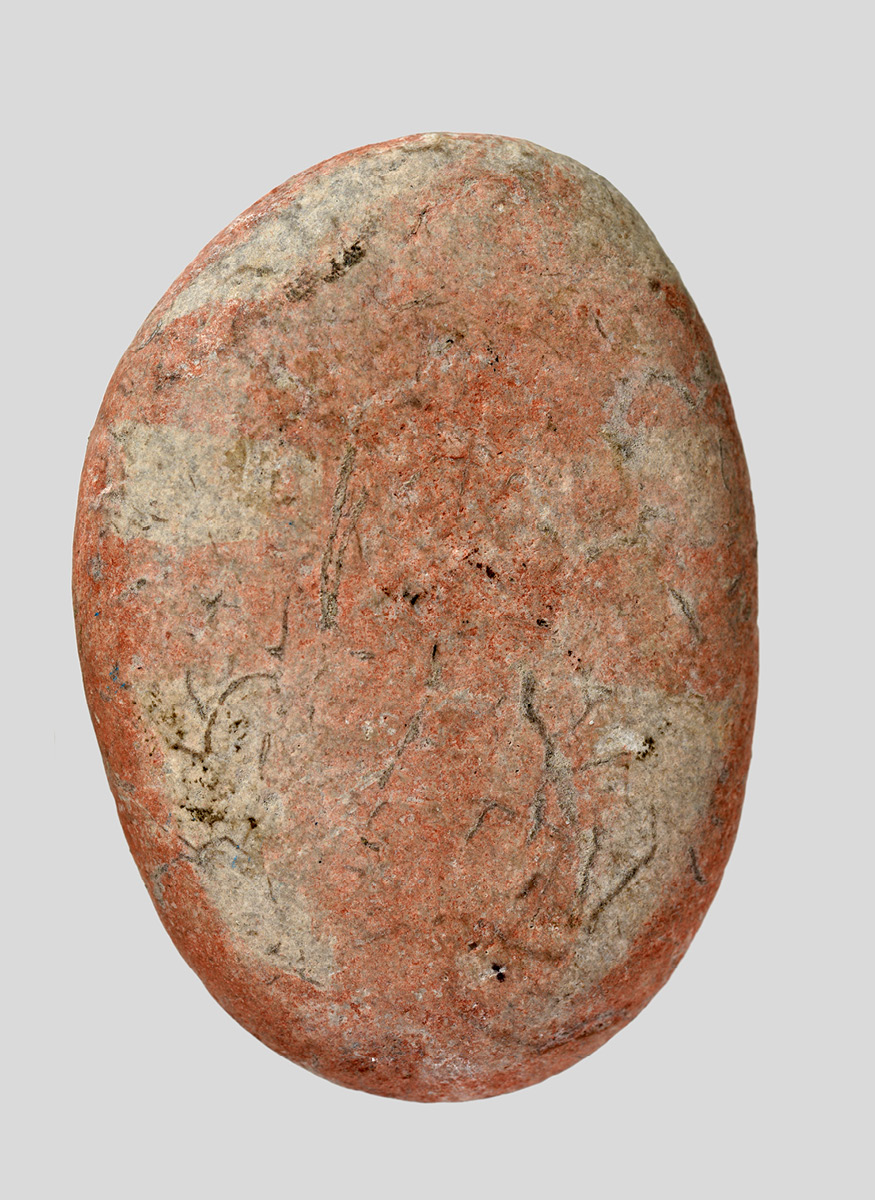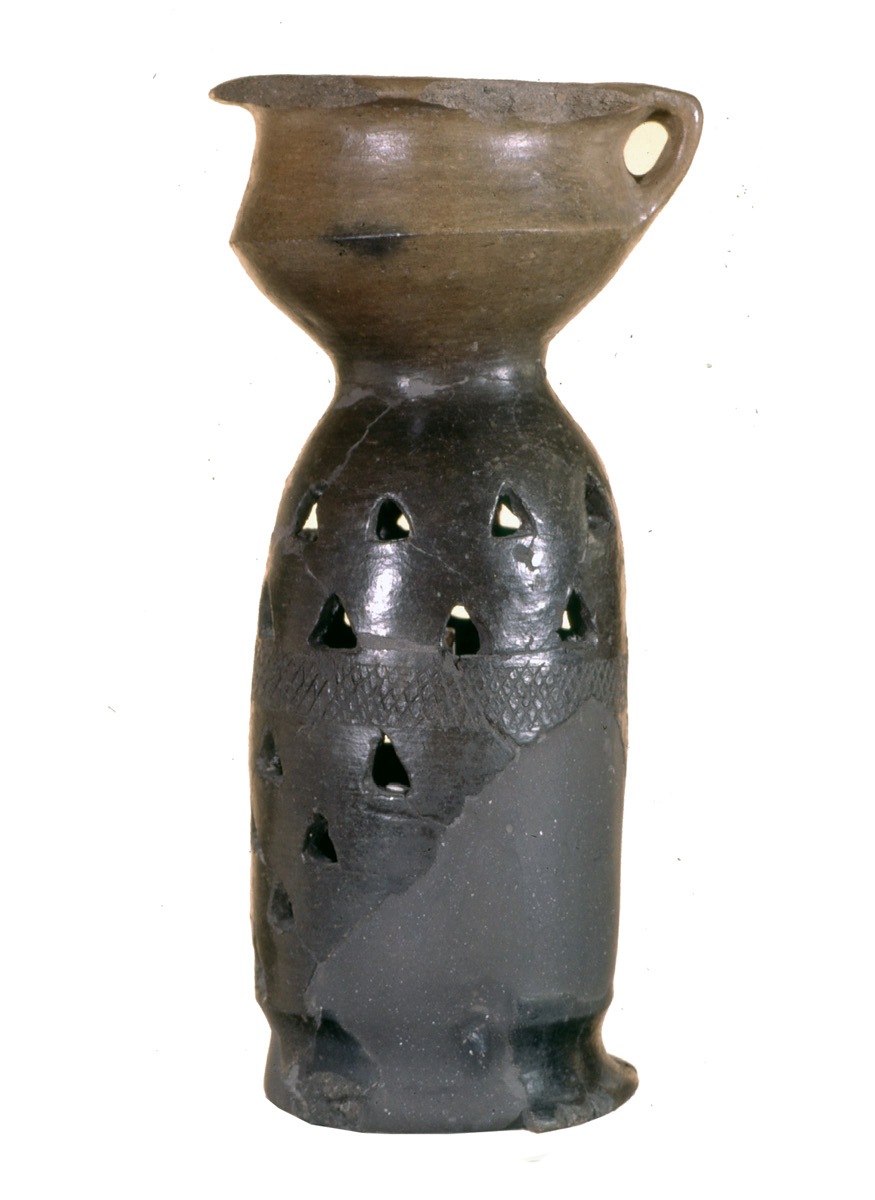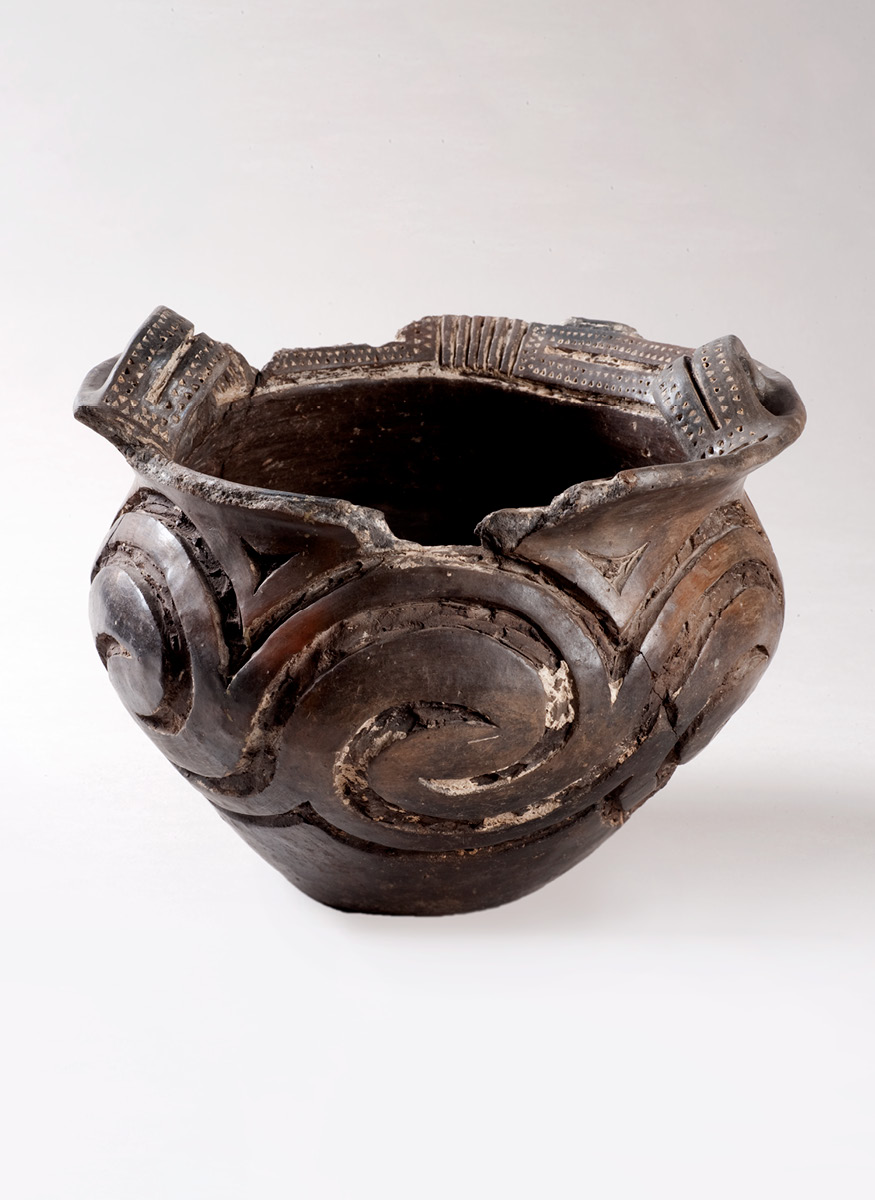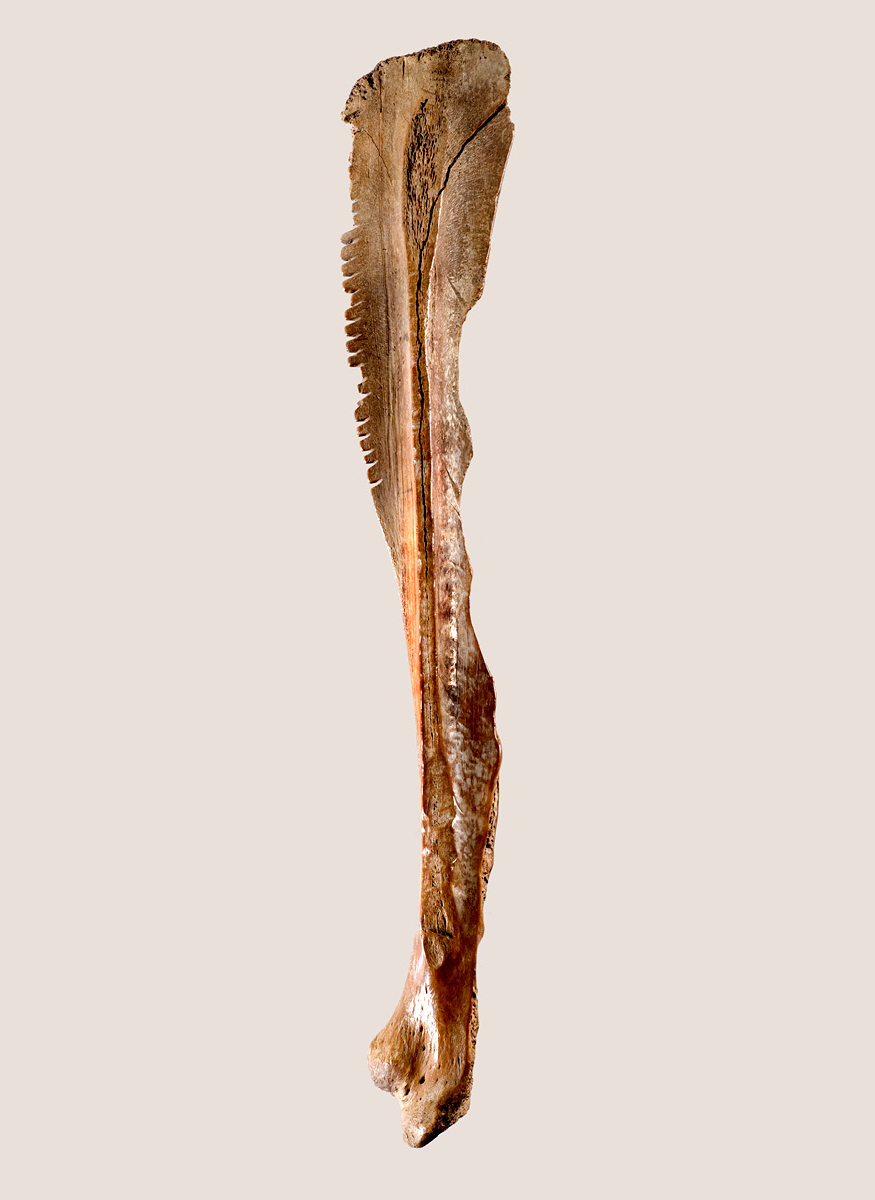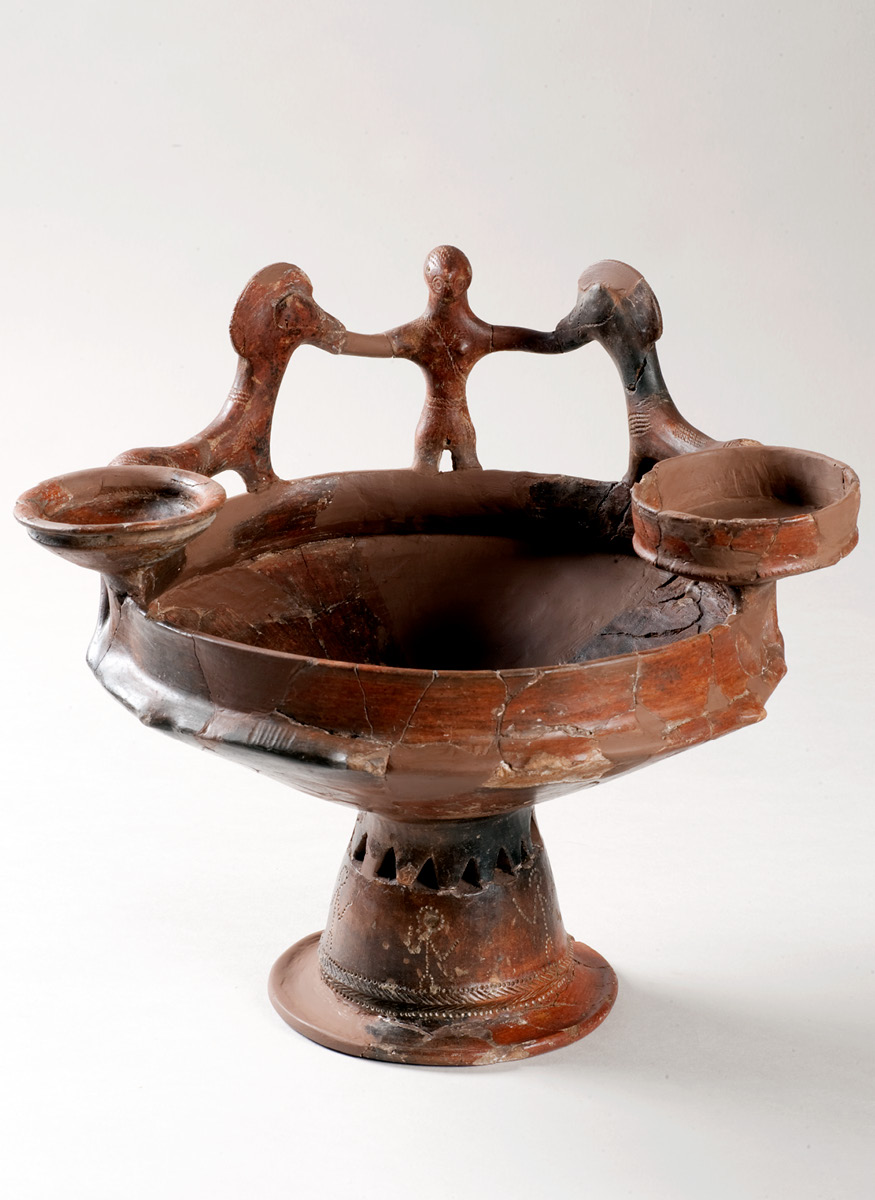Prehistory and Protohistory
Between the late 19th century and the early 20th century, a group of relics recovered by both regular excavation campaigns as well as illegal excavations followed by state intervention, together with acquisitions and donations from private families, gave rise to the initial collection. This phase is mainly represented by finds dating back to the Bronze Age, from Pertosa and Zachito Caves (Salerno) and from Murgia Timone (Matera), as well as finds dating back to the Iron Age from the necropolis of Cumae and the Sarno valley. From 1920 onwards a new substantial group of relics entered the collection, thanks to the excavations carried out at grotta delle Felci on the island of Capri and in the area of Avellino (Contrada La Starza of Ariano Irpino and necropolis of Madonna delle Grazie at Mirabella Eclano). From 1940 to the early 50s new important discoveries of Copper Age relics were made at Paestum, findspot Gaudo, (Salerno), as well as in the neighborhood of Materdei in Naples and at Caposauro in Benevento. Moreover, in the same period the baron Marcello Spinelli donated to the museum 7000 objects yielded by the necropolis of Suessula, located at Acerra (Napoli). From 1960 onwards the collection has been furtherly enriched thanks to a series of excavation campaigns promoted in various places in the Campania region, such as Santa Maria Capua Vetere (ancient Capua) and Maddaloni (ancient Calatia) in the province of Caserta and, more recently, in the Gulf of Naples, on the little island of Vivara, at Piano di Sorrento and in the area of Pozzuoli (Licola, Monte Sant’Angelo and Montagna Spaccata).
The tour starts in room 128, where visitors are introduced to the collection, and develops on a vertical line on three levels, according to a chronological order, but also following the various contexts of provenance. On the third level, Paleolithic relics from Capri and from the caves of Castelcivita and Marina di Camerota (Salerno) testify the most ancient human presence in Campania. The Neolithic, characterized by a shift towards a non-nomadic life and a production based economy, is represented by the finds from grotta delle Felci, still at Capri, and from Ariano Irpino. Next step takes visitors on the verge of the Age of Metals, when the first objects made of copper started to be used by people, whose presence is recorded in the necropolis of Gaudo, near Paestum and at Mirabella Eclano. Room 149 houses the reconstruction of a typical burial of the Copper Age with the relative grave goods. Going down to the second leve, the early Bronze Age is documented by objects found in the village of Palma Campania, at Camposauro and Ariano Irpino, whereas the late Bronze Age unravels through the relics of Ariano Irpino, Murgia Timone and Vivara.
On the ground floor, the stories from the Bronze age come to an end with the discoveries made in the caves of Pertosa, Zachito and Polla. The Iron Age is presented through a series of grave goods, which belong to the two main settlements of the Campanian plain at the time: Capua and Cumae, together with Calatia and Suessula on the one hand, and the Sarno valley villages on the opther, respectively depending from the abovementioned main centers. The tour of the collection ends with room 126 and the following rooms dedicated to the settlement of Pithecusa, on the island of Ischia, create a link with the future topographic section.
